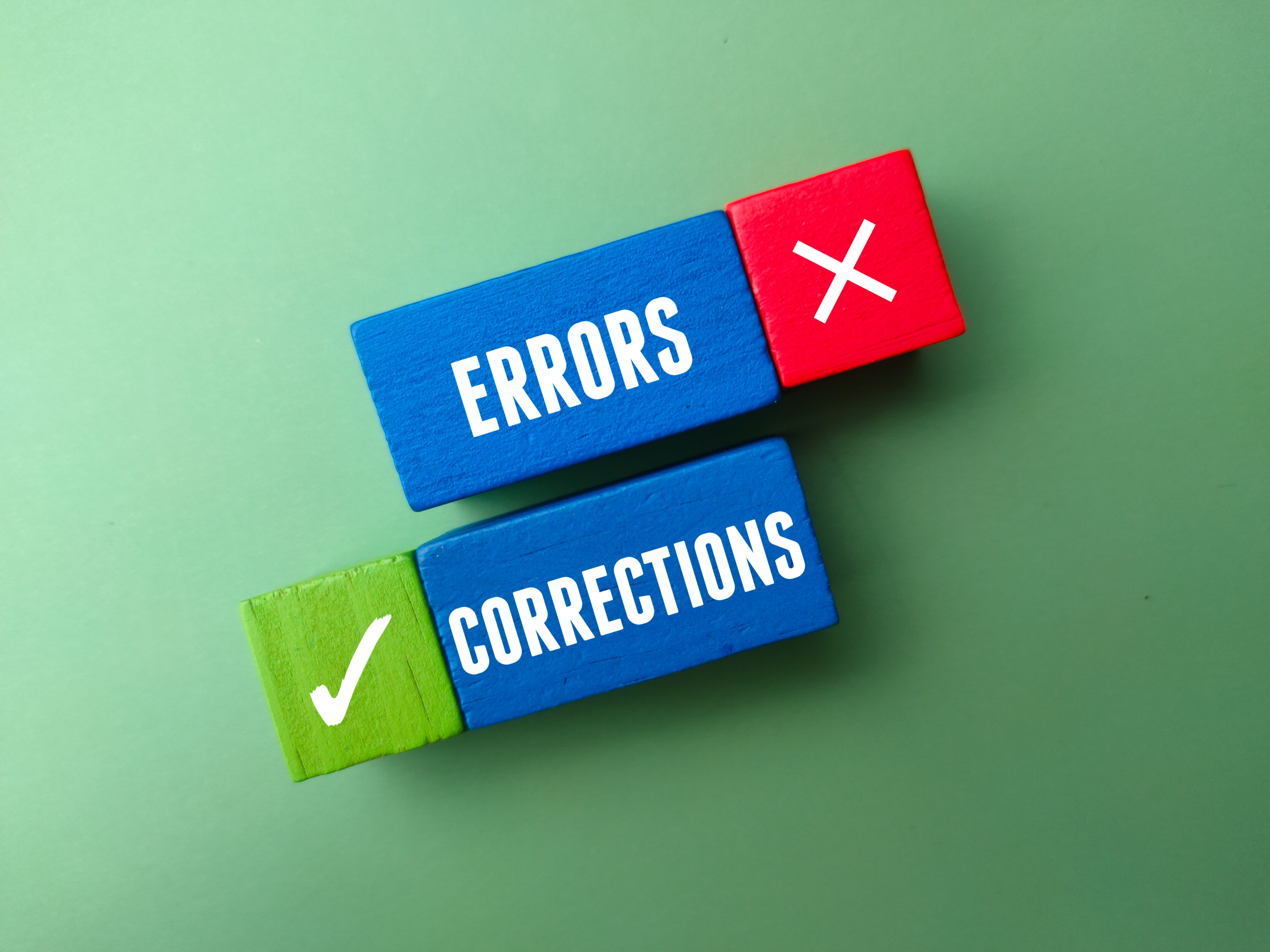Corrective Action Plan – How to Create One That’s Highly Effective
A major function of a CAP (corrective action plan) is to prevent the same issues from occurring again. This leads to strengthened employee performances, products, and business processes to prevent errors that result in non-conformities. A CAP may for example address work instructions being misinterpreted, equipment failure, or a customer complaint.
The definition for corrective action in the international standard for a quality management system, ISO 9001, is “any action that is taken to mitigate the cause and effect of a problem to prevent it from recurring.”
Irrespective of their size and scope, all businesses have an element of risk. Projects often result in unanticipated action items that may result in errors end accidents. Corrective actions assist in realigning business processes that are not operating the way they should. A corrective action plan should also prevent future incidents via tracking and documentation.
Corrective action plans typically form part of a company’s nonconformance reporting system and will be part of non conformance management software.
Even smaller companies that don’t do formal quality management by having implemented a quality management system can improve business operations by implementing corrective measures and a corrective action report.
In this article, we’ll look at how a corrective action plan is a major benefit for risk management procedures. It also contains a step-by-step plan that organizations can use to build a workplace that’s both more profitable and safer.
A Corrective Action Plan – What Is It?
Rigorous documentation is used to make a corrective action plan truly effective. The CAP identifies problems’ root causes and aims to prevent their recurrence. A CAP is not meant to simply identify problems and address the surface signs, but to resolve their root causes. Corrective action plans also form part of an organization’s CAPA plan (Corrective Action and Preventive Action) and continuous improvement plan. CAPA tracker software makes keeping track of the plan simple and easy.
An effective corrective action plan or non-conformance reporting templates can help to identify and mitigate similar issues in the future. Using templates adds a layer of transparency to the businesses’ operations while empowering team members to implement corrective actions.
For a corrective action plan to be effective, it needs to be extremely precise and provide ample details. The plan should provide a knowledgeable estimate of timelines and resources needed. A CAP should as a best practice include key stakeholder information, process constraints, interim deadlines, and guideline metrics to show progress.
The Corrective Action Process – Crucial Steps
Although corrective and preventive actions (CAPA plan) are crucial to all businesses, there are various ways in which problem-solving theory can be applied. As a corrective action plan example, the automotive industry typically uses various formats for its corrective action process based on supplier audits, including the 8D (Eight Disciplines) Process.
The steps that follow form part of ISO 9001’s corrective action process that could be applied broadly to address most issues in the workplace.
Problem Definition
Before corrective actions concerning a noncompliance issue can be taken, the problem needs to be identified and defined. Depending on the exact scenario, you can use various methods to identify non-conformities.
You can for example identify risk controls or regulatory compliance issues via internal audits or react to customer complaints.
Another option would be to use incident investigation techniques to determine the issue that lies behind an error or accident.
While you define the problem, you also need to research areas that will help quantify the impact on the business. Describe the issue’s what, who, where, when, and why. Define the expected outcome clearly. This is often referred to as a “should be” statement.
If you for example receive a corrective action request form that states that the wrong batch of parts was received from a supplier, a comparable statement may be: “We received copper parts,” and “the parts should be made of plastic.”
If you find that it is difficult to define the expected outcome, the issue may not be worthy of the time and effort required to compile a corrective action plan.
Scope Definition
This step is meant to reveal the problem’s severity and how essential business operations are affected. This is done by examining the problem within the context of it occurring.
A problem that only occurs occasionally or impacts only one specific type of transaction will be less crucial to address than one that happens every day or impacts the organization’s entire supply chain, such as, for example, a hazardous pipeline leak.
Although all problems should be addressed, you should prioritize them based on their scope to get some idea of whether it needs attention immediately.
Take Containment Actions
Although corrective actions aim to find the root causes of problems and prevent them from happening again, the process takes time. Ongoing issues can’t be allowed to continue unresolved while risk assessment is performed.
Containment actions are typically taken to address the most urgent symptoms. While the team works on addressing the source of the problem, you should perform measures and checks to catch and fix all similar surface-level problems.
Identify the Problem’s Root Cause
The trickiest, and most often the longest part of the corrective action process is to find the underlying issue. It may sometimes appear like you’ve found the problem’s root cause, only to discover later that you have only managed to identify a surface-level issue.
It is therefore crucial that you be extremely careful and use well-established techniques for root cause analysis to ensure that you have identified the underlying issue correctly and completely.
Root cause analysis techniques commonly used include the “5 Whys” analysis method, which simply means you need to ask “why” 5 times, and the more intricate fishbone or Ishikawa diagram.
For continuous improvement plan examples, and a more detailed description of the various methods you can use, see our article on Root Cause Analysis.
Plan The Corrective Action Steps to Fix the Root Cause
Once you have identified the problem’s root cause, it’s time to move to the planning stage and create a plan that will address it and prevent it from happening again.
Define SMART goals (specific, measurable, achievable, realistic, and time-bound) and allocate realistic deadlines. Ensure these solutions or goals are positioned around the root cause, and detail every step required to eliminate the underlying cause of the issue.
Depending on how big the problem is and the size of the impact on the business, you may also have to provide a return on investment and cost analysis and obtain formal approval from management for funding before you begin the corrective action process.
Your corrective action plan will become much more manageable if you provide a list of responsible individuals, how they should report progress, and to whom. Also, include appropriate time frames and due dates that they should be aware of when reporting.
Implementing Your Corrective Action Plan
The next step is to implement your proposed corrective actions.
Some corrective actions are literally as simple as updating old software or replacing faulty or old equipment. A CAP can however also involve much more complex processes such as rewriting procedures or hiring external consultants to manage your risks for you.
Be extremely thorough with each aspect of the corrective action plan and communicate progress regularly with all relevant stakeholders.
Ensure That the Plan Worked by Following Up
After the corrective action plan has been implemented, finalize the process with a corrective action report that is well documented. Schedule a final meeting to inform the stakeholders about any changes to workflows, procedures, or operations.
After an appropriate time, follow up to ensure that the corrective actions implemented have indeed resolved the problem. If it hasn’t, you’ll need to dig deeper and repeat the root cause analysis until all the underlying causes of the problem have been addressed and the problem does not recur. Also document further lessons learned to help in resolving similar issues in the future.
For the corrective action process to be effective, you need to pay attention to detail, integrate multiple streams of analysis and data, and communicate with stakeholders regularly.
Automating the Process
Keeping track of preventive and corrective action described in this article manually is both time-consuming and inefficient and will often result in errors. Streamline and templatize your corrective action plan process and simplify the team’s work by subscribing to our Corrective Actions Software, also known as Non-Conformance.
Automation will transform the corrective action process into a more cost-effective and much smoother process. Our online platform provides a corrective action plan template and will enable you to collate, analyze, and store all types of data, making Non-conformance Reporting (NCR) complete and holistic. The dashboard and flexible reporting will allow key stakeholders to easily access important information, thereby providing better efficiency and visibility.



